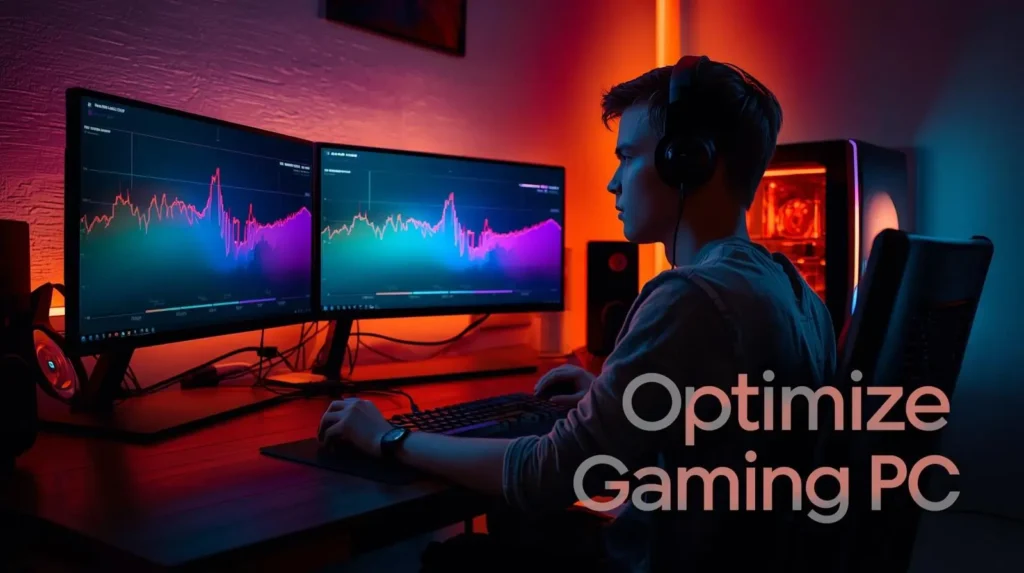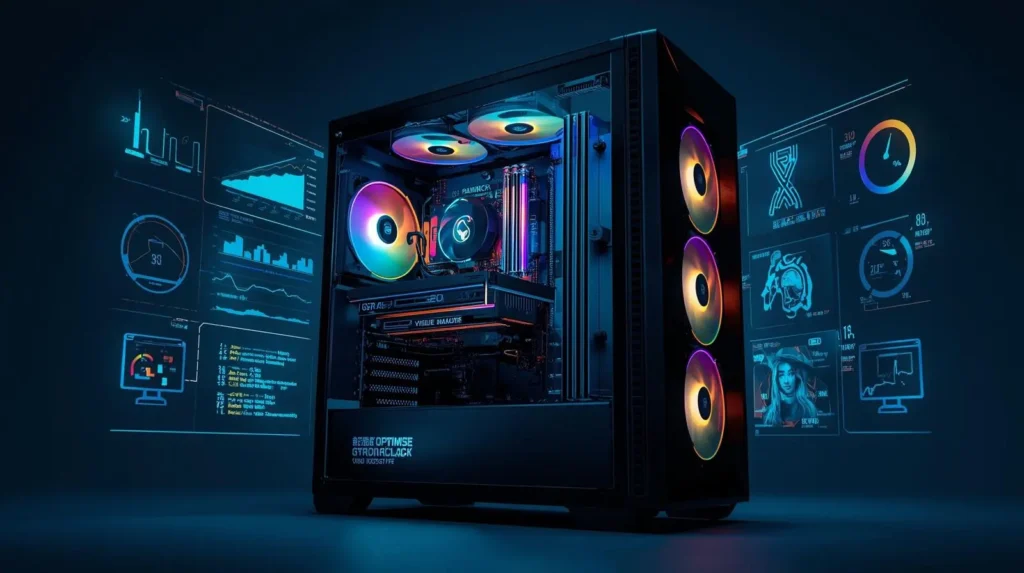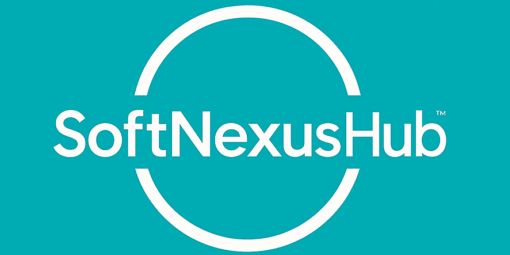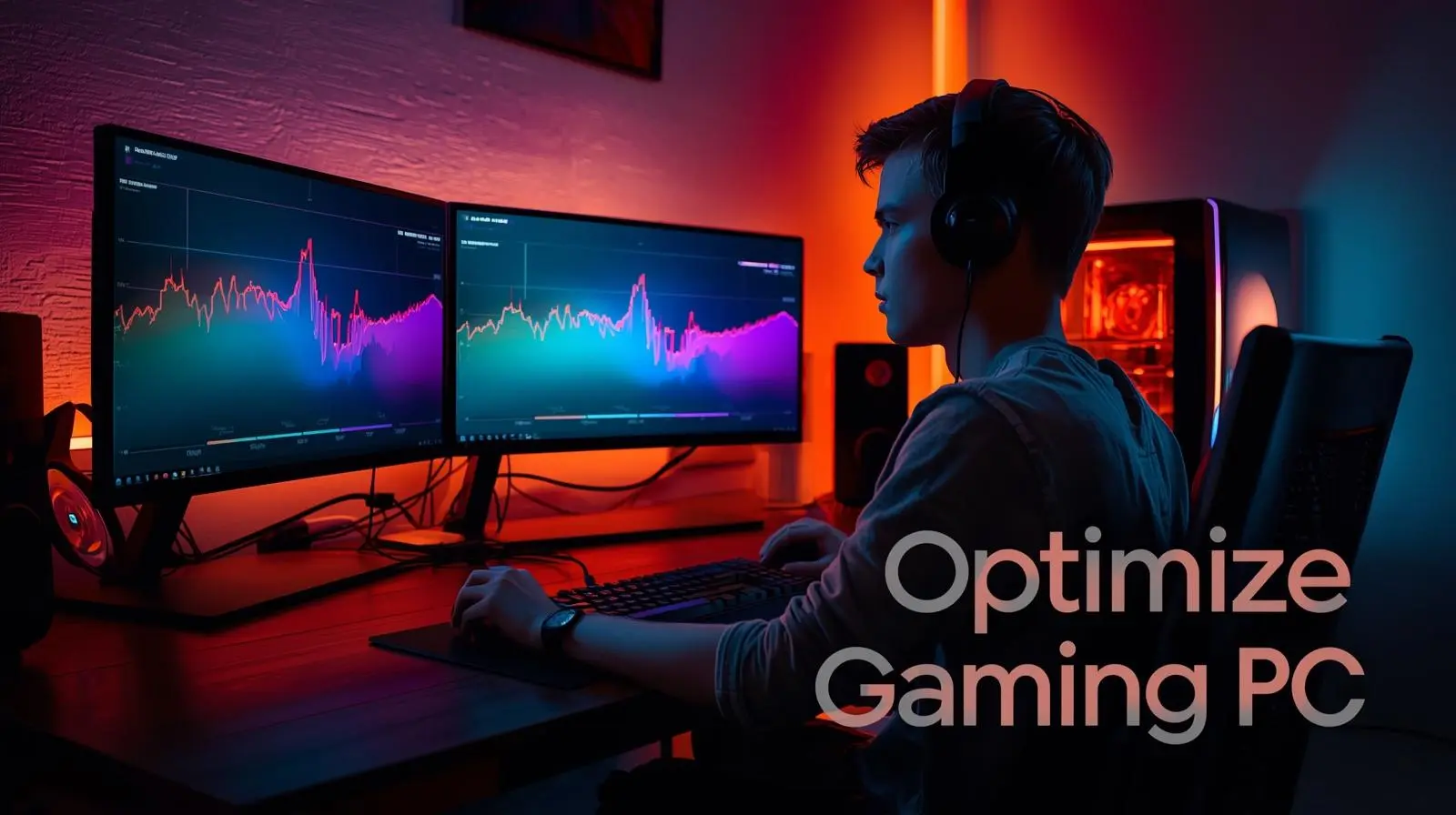
If you’ve ever wondered why your brand-new game doesn’t feel as smooth as it should, you’re not alone. Modern titles push computers to their limits, and unless your system is set up correctly, you might deal with stuttering, lag, or long loading times. The good news? You don’t necessarily need a $2,000 gaming rig to fix these issues. With the right tweaks, you can optimize PC for gaming and get more performance out of what you already have.
Think of it like tuning up a car. Even if you don’t buy a new engine, small adjustments can make a huge difference in how it drives. The same goes for gaming PCs — a few changes in settings, hardware, and maintenance can unlock smoother gameplay and faster response times. Let’s dive into 12 smart strategies that will help you play at your best in 2025.
1. Update Your Graphics Drivers (The Easy FPS Boost)
Imagine buying a new game and it just won’t run properly. One of the first things seasoned gamers check? Their graphics card drivers. Manufacturers like NVIDIA and AMD release updates constantly to squeeze more performance out of the same hardware. Keeping drivers current ensures your system is fully compatible with the latest titles.
Quick Tip: Don’t rely only on Windows Update. Visit NVIDIA GeForce Experience or AMD Adrenalin directly and install the newest drivers. It’s one of the simplest and most effective steps in optimize PC for gaming.
2. Use an SSD for Faster Load Times
Gone are the days when waiting a full minute for a game to load was normal. If you’re still using a traditional hard drive, you’re holding yourself back. Switching to a solid-state drive (SSD), especially NVMe SSDs, can slash load times and prevent in-game stutter.
I’ve seen players cut their loading screens in half just by moving their game files to an SSD. It feels like magic, but really, it’s just faster read and write speeds.
3. Balance Graphics Settings for Performance and Visuals
Here’s a truth many new gamers overlook: “Ultra” settings aren’t always worth it. Sure, the game looks stunning, but if your frames drop every few seconds, the experience suffers. The trick is balance.
Lower things like shadows, anti-aliasing, and post-processing. These often eat up resources but don’t drastically change the visuals. On the other hand, keep textures and resolution scaling at reasonable levels to avoid blurry gameplay. This fine-tuning is one of the easiest ways to optimize PC for gaming without spending a dime, much like how Sheppard Software free educational games help students learn effectively without extra cost.
4. Enable Windows Game Mode
Microsoft added Game Mode to Windows 10 and improved it in Windows 11. When turned on, it prioritizes your game over background tasks, which means smoother gameplay. It’s like telling your PC, “Forget everything else, just focus on this game right now.”
How to enable it: Press Win + I → Gaming → Game Mode → Toggle On. Simple as that.
5. Shut Down Background Apps Before You Play
You’d be surprised how many apps quietly eat up your system’s power. Discord overlays, Chrome tabs, Spotify, even Windows widgets — all of these steal resources your game could use.
Before launching a game, open Task Manager (Ctrl + Shift + Esc) and close anything unnecessary. Freeing up RAM and CPU cycles can instantly boost FPS and reduce lag.
6. Upgrade Your RAM (But Don’t Overspend)
Most modern games are comfortable with 16GB of RAM, and that’s what I recommend as a sweet spot in 2025. If you stream, multitask heavily, or edit videos, 32GB can help, but beyond that? It’s rarely worth the money.
More RAM doesn’t mean faster gaming if your system isn’t using it. Still, if you’re stuck on 8GB, upgrading is one of the best bang-for-your-buck improvements you can make to optimize PC for gaming.
7. Keep Your PC Cool and Clean
Overheating is a hidden enemy of performance. When your CPU or GPU gets too hot, it automatically slows down to protect itself — a process called thermal throttling. That means fewer frames and choppier gameplay.
Regularly clean dust from fans and vents. If possible, improve airflow in your case by adding fans or upgrading your cooling system. Even better, manage your cables so air can flow freely inside your case. A clean and cool system is a faster system.
8. Consider Overclocking (If You’re Confident)
Overclocking sounds scary, but modern software has made it more accessible. Tools like MSI Afterburner allow you to safely increase GPU and CPU performance with real-time monitoring. Done right, this can mean noticeable gains in FPS.
But here’s the golden rule: don’t push too far. Test settings slowly, monitor temperatures, and keep stability in mind. A stable system at slightly higher performance is better than constant crashes.
9. Optimize Power Settings
By default, Windows often runs on “Balanced” power mode to save energy. But if you’re gaming on a desktop, this just holds you back. Switching to “High Performance” tells your PC to give full power to your CPU and GPU.
How to enable: Control Panel → Power Options → High Performance. This alone can improve consistency in demanding games.
10. Improve Network Performance for Online Games
If you’re into multiplayer, FPS drops aren’t the only problem — network lag can ruin your game. A wired Ethernet connection is always more stable than Wi-Fi. If Wi-Fi is your only option, use a 5GHz network instead of 2.4GHz for less interference.
Also, make sure nothing else in your house is eating bandwidth while you’re gaming. Pausing downloads or video streams can free up your connection for smoother online play.
11. Calibrate Your Monitor and Audio Setup
Optimizing your PC for gaming isn’t only about frames per second. It’s also about immersion. A high-refresh-rate monitor (144Hz or more) makes motion feel buttery smooth. Calibrating brightness, contrast, and color accuracy reduces eye strain and helps you spot enemies faster.
Audio matters too. A good headset with surround sound can give you the edge in competitive games by letting you hear subtle footsteps or reloads. Pairing performance with immersion creates the complete gaming experience.
12. Explore Cloud Gaming Options
Even with all these tweaks, maybe your hardware is still struggling with the newest releases. Cloud gaming platforms like NVIDIA GeForce NOW or Xbox Cloud Gaming let you play demanding titles without needing a powerful PC. Instead, the heavy lifting is done on remote servers, and the game is streamed to you.
The only catch? You need a strong, stable internet connection. But for some players, it’s a cost-effective way to enjoy cutting-edge games without spending thousands on upgrades.
Quick Comparison Table: DIY Optimization vs Upgrades vs Cloud Gaming
| Method | Cost | Best For | Drawbacks |
|---|---|---|---|
| DIY Tweaks (Drivers, Game Mode, Settings) | Free | Gamers who want fast, simple boosts | Requires manual setup |
| Hardware Upgrades (SSD, RAM, GPU) | $50–$500+ | Players planning long-term PC use | Can be pricey |
| Cloud Gaming Services | $10–$20/month | Gamers with weak PCs but strong internet | Possible input lag, subscription fees |
Wrapping It Up
At the end of the day, learning how to optimize PC for gaming is about more than just one trick. It’s the combination of many small steps that create a smoother, faster, and more enjoyable experience. From updating drivers and closing background apps to upgrading hardware or even trying cloud gaming, each adjustment plays a role.
You don’t always need a monster rig to enjoy today’s games. Sometimes, the right settings and a little maintenance are all it takes to transform your setup. So, the next time you feel your PC struggling, try a few of these methods. You might be surprised at just how much performance you’ve been leaving on the table.
If you’ve ever started a new game only to face lag, stuttering, or endless loading screens, you know the frustration. A flashy graphics card or setup isn’t enough — the real secret is how well you tune your system. Optimizing your PC means making smart hardware choices, cleaning software, and adjusting settings for smoother gameplay. The best part? You don’t always need to spend thousands. Even small upgrades can transform performance, and understanding video game optimization helps players balance visuals and speed effectively.
Why Optimization Matters More Than Ever

Modern games are gorgeous but demanding. High-definition textures, ray tracing, massive open worlds, and competitive online play all push your computer harder than ever before. Even if you already have a decent setup, without proper optimization you might not be getting the performance you paid for. Think of it like tuning a car: the engine may be powerful, but if the tires are flat and the fuel is dirty, you won’t get far. A well-optimize PC for gaming ensures smoother frame rates, faster load times, and fewer headaches.
1. Focus on Hardware That Truly Matters
When it comes to upgrading, not every piece of hardware gives equal value. Some parts make a night-and-day difference for gaming, while others only help a little.
Graphics Card (GPU)
The GPU is the king of gaming hardware. If you’re trying to run the latest AAA games at high settings, this is the component that makes or breaks your experience. Cards like NVIDIA’s RTX 4070/4080 or AMD’s Radeon RX 7000 series are built for modern demands, with plenty of VRAM and support for ray tracing. Even mid-tier GPUs can deliver strong results at 1080p or 1440p, making them an essential part when you set out to optimize PC for gaming without overspending.
Solid-State Drive (SSD)
Still loading games from an old-school hard drive? That’s slowing you down more than you realize. An NVMe SSD is one of the simplest and most effective upgrades. It not only reduces loading times but also minimizes in-game stuttering caused by slow data access. Installing your OS and favorite titles on an SSD is one of the fastest ways to optimize PC for gaming in 2025, giving you smoother performance right away.
RAM (Memory)
For gaming in 2025, 16GB of RAM is the sweet spot for most players. However, if you like to multitask — streaming, editing videos, or running mods — then 32GB makes sense. Faster RAM speeds also help in CPU-heavy games, so check your motherboard’s compatibility and aim for at least 3200MHz or higher. Proper memory allocation is a subtle yet important way to optimize PC for gaming, ensuring your system keeps up with modern demands.
CPU
Your processor doesn’t just sit around looking important. It handles AI, game physics, and a lot of the behind-the-scenes work that keeps your game world alive. If your CPU is too old, even a great GPU can feel held back. A modern six-core or eight-core CPU, like AMD Ryzen 7 or Intel i7, balances performance without breaking the bank.
Cooling Solutions
Performance drops when your PC overheats. Better cooling — whether it’s a liquid cooler, more case fans, or simply better cable management — prevents thermal throttling and keeps your system stable. Gaming is a marathon, not a sprint, and your PC should stay cool throughout long sessions.
Here’s a quick look at where each upgrade helps the most:
| Component | Impact on Gaming | Recommended Choice |
|---|---|---|
| GPU | Huge boost to graphics & FPS | NVIDIA RTX 4070/4080, AMD RX 7700/7900 |
| SSD | Shorter load times, smoother data access | NVMe SSD (1TB or more) |
| RAM | Smooth multitasking, fewer slowdowns | 16GB minimum, 32GB for heavy users |
| CPU | Handles AI, physics, game logic | Ryzen 7, Intel i7 |
| Cooling | Prevents throttling & heat damage | Liquid cooling or multiple case fans |
2. Tune Up Your Software for Maximum Speed
Even the best hardware needs the right software environment. Sometimes your PC feels slow not because it’s weak, but because it’s bogged down with clutter.
First, always keep your GPU drivers up to date. NVIDIA, AMD, and Intel regularly release updates that improve performance in specific games. Outdated drivers can cause crashes, lower FPS, or even make new titles unplayable.
Second, tweak your in-game settings wisely. Many players crank everything to “Ultra” without realizing it’s overkill. Turning down shadows, reducing anti-aliasing, or slightly lowering resolution scaling can free up tons of performance while still looking great.
Third, enable Windows Game Mode. It’s a small feature, but it helps your system prioritize gaming tasks over background processes. Speaking of background apps — close them! Music players, browsers, and chat apps eat RAM and CPU power without you noticing.
And don’t forget about your power plan. Setting your PC to “High Performance” ensures your CPU and GPU aren’t throttled to save power during a session.
3. Unlock Hidden GPU Settings
Your graphics card’s control panel offers advanced options that can squeeze out extra frames. For NVIDIA users, setting the power mode to “Prefer Maximum Performance,” lowering texture filtering quality, and disabling V-Sync can reduce input lag. For AMD users, features like Anti-Lag and Radeon Chill help balance performance and responsiveness.
Overclocking is also an option if you’re comfortable experimenting. With tools like MSI Afterburner, you can increase clock speeds gradually while monitoring temps. The gains vary depending on your card, but even a 5–10% performance bump can make a difference.
4. Clean Up Your Storage
A messy hard drive slows everything down. Regularly delete temporary files using the built-in Windows tools or by typing “%temp%” and clearing the folder. Uninstall apps you don’t use anymore and keep your game library organized. If you’re using SSDs, make sure TRIM is enabled to maintain their speed over time.
5. Reduce Lag in Online Gaming
Ever lost a match because of lag? It happens to the best of us. The fastest way to improve your connection is by using an Ethernet cable instead of Wi-Fi. Wired connections are more stable and have lower latency. If that’s not possible, make sure you’re on a 5GHz Wi-Fi band rather than the crowded 2.4GHz.
Adjust your router settings too. Many modern routers allow you to enable QoS (Quality of Service), which prioritizes gaming traffic over background downloads or streaming. Also, close bandwidth-heavy apps while gaming and always pick the closest server in online titles for the lowest ping.
6. Enhance the Audio-Visual Experience
Optimize PC for gaming isn’t just about raw performance — immersion matters too. Upgrading to a high-refresh-rate monitor (144Hz or more) makes everything look smoother and gives you an edge in competitive shooters. Properly calibrating your screen can also reduce eye strain and make colors pop the way developers intended.
Audio is equally important. A good gaming headset with surround sound lets you hear footsteps, gunfire, or environmental cues that can change the outcome of a match. Many modern games also support spatial audio, which enhances directional sound even further.
7. Don’t Ignore Peripherals
Your mouse, keyboard, and controller can actually affect performance more than you think. Adjust your mouse DPI for more precise aiming, use macros on your keyboard to speed up complex actions, and consider a wired controller for faster response times. Also, check if your devices allow polling rate adjustments. A higher polling rate means inputs are registered more quickly, which can be crucial in fast-paced games.
8. Keep Things Cool and Organized
Cable clutter isn’t just ugly — it blocks airflow. Tie your cables neatly, position fans to create proper intake and exhaust flow, and consider upgrading your CPU cooler if you notice high temperatures. Monitoring fan curves with software ensures your system stays cool without sounding like a jet engine.
9. Explore Cloud Gaming as a Backup
If your PC struggles with the latest titles despite optimizations, cloud gaming might be your safety net. Services like GeForce NOW or Xbox Cloud Gaming let you play demanding games streamed from powerful servers. All you need is a stable internet connection of at least 15–20 Mbps. While it’s not perfect for competitive gaming, it’s a solid option for enjoying AAA titles without upgrading hardware.
10. Test, Benchmark, and Improve
After making all these changes, don’t just assume it worked — test it. Free benchmarking tools like 3DMark, Unigine Heaven, or even in-game FPS counters show you how much performance you’ve gained. Keep an eye on your frame rates, CPU/GPU temps, and system stability. If you’re still not satisfied, experiment again. Optimization is an ongoing process.
Conclusion
Learning how to optimize PC for gaming is less about spending blindly on upgrades and more about knowing what actually matters. By combining smart hardware choices, regular software maintenance, and a few tweaks most people overlook, you can transform your machine into a true gaming powerhouse. Whether you’re aiming for higher FPS, faster load times, or just a smoother experience overall, these tips ensure you’re getting the most out of your system.
So before you blame your PC for struggling with the latest releases, ask yourself: is it really weak, or does it just need some love and optimization? Chances are, with a bit of care, your current setup still has plenty of fight left in it.
FAQs
Q1: How do I optimize my PC for gaming without spending money?
You can optimize PC for gaming for free by updating drivers, enabling Windows Game Mode, closing background apps, and adjusting in-game settings.
Q2: Does upgrading RAM really help with gaming?
Yes, upgrading to 16GB or more RAM can improve performance, especially if you multitask or stream while gaming. It’s one of the cheapest upgrades for smoother gameplay.
Q3: Is an SSD better than an HDD for gaming?
Absolutely. SSDs reduce load times and minimize stuttering in open-world titles. For the best results, install both your operating system and games on an SSD.
Q4: Can cloud gaming replace a high-end PC?
Cloud gaming services like NVIDIA GeForce NOW and Xbox Cloud Gaming can let you play demanding titles without powerful hardware, but a stable internet connection is required.
Q5: What graphics settings should I lower to boost FPS?
Lower shadows, anti-aliasing, and post-processing effects. Keep textures at medium or high to maintain visual quality while gaining smoother performance.

